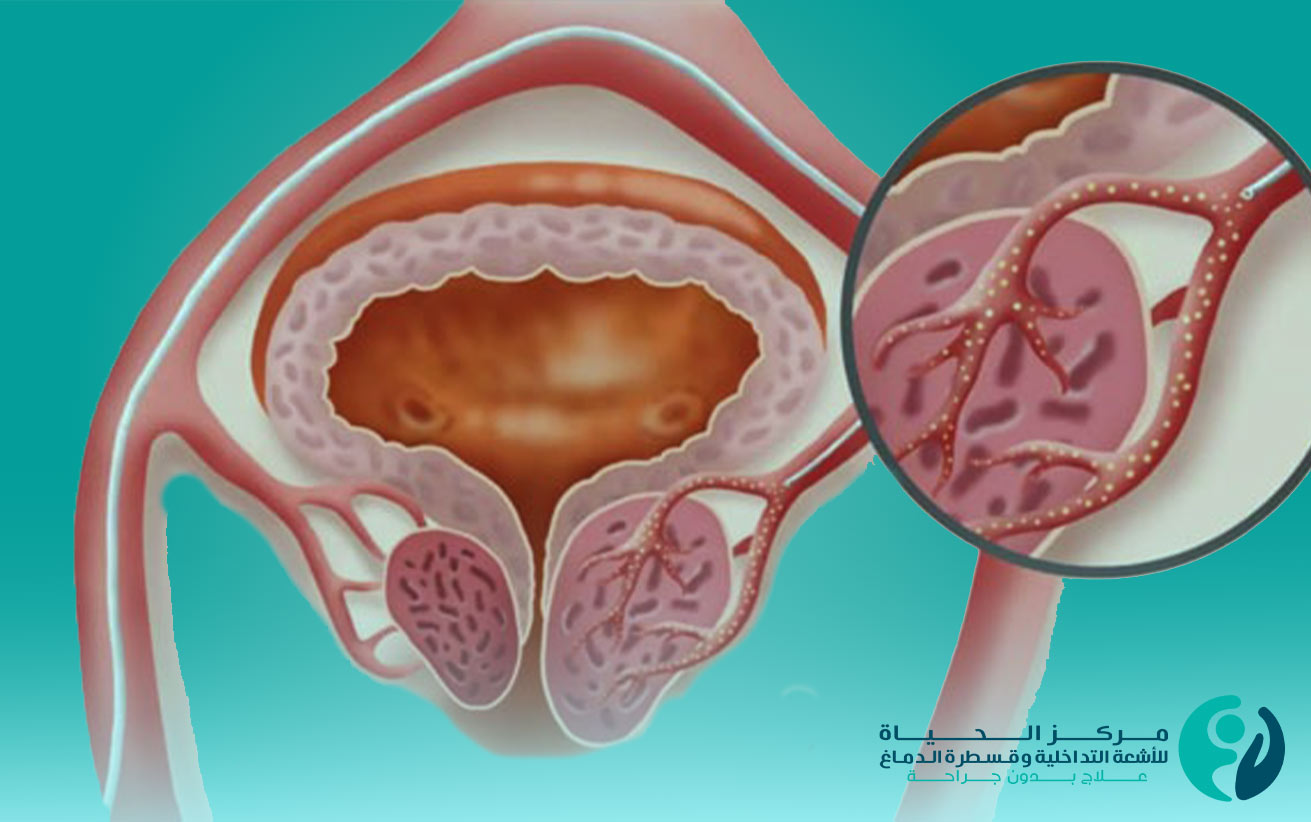Treatment of Prostate Enlargement with Interventional Radiology
Prostate enlargement, also known as benign prostatic hyperplasia (BPH), is a common problem that affects men over the age of 40. The enlargement is characterized by an increase in the size of the prostate gland, which surrounds the bottom of the bladder and plays a crucial role in the urinary and reproductive systems; leading to pressure on the ureter and bladder, resulting in annoying symptoms such as difficulty urinating, intermittent urination, frequent nighttime urination, and weak urine flow. These symptoms can significantly affect the patient's quality of life and ability to perform daily activities.
Over the years, various techniques have developed to treat prostate enlargement, and one of the modern approaches is interventional radiology. Interventional radiology is a non-surgical procedure for treating prostate enlargement, where an arterial catheter is used to block the blood supply of the enlarged prostate.
What are the causes of prostate enlargement?
Prostate enlargement is usually due to changes in male hormones (testosterone) and becomes more likely with increasing age. Genetic factors also play a role in the development of prostate enlargement. Additionally, other factors can increase the likelihood of developing prostate enlargement, such as chronic diseases, diet, and lifestyle.
What are the symptoms associated with prostate enlargement?
Prostate enlargement can cause a variety of symptoms that affect the urinary and reproductive systems. Here are some common symptoms associated with an enlarged prostate:
1. Frequent urination: increased urination and the need to urinate frequently, especially at night.
2. Urgent need to urinate: a strong and urgent need to urinate that can be difficult to postpone.
3. Weak urine flow: a weak and slow flow that may stop and start several times during urination.
4. Uncontrolled urination: uncontrolled and poorly managed urination.
5. Delayed urination: It may take the patient a while before starting urination.
6. A Feeling of incomplete emptying: The patient may feel that the bladder has not emptied completely after urination.
7. Difficulty urinating: The narrowing of the urethra due to the increased size of the prostate can make urination more difficult.
8. Urinary incontinence: Leakage of urine or difficulty controlling it (involuntary urination).
9. Pain or discomfort: Pain in the penis, testicles, or pubic area, which may be accompanied by general discomfort in the pelvic area.
10. Bladder infection: Urinary retention can lead to bladder infection and the appearance of symptoms such as burning or pain during urination and a strong urge to urinate.
Treatment of prostate enlargement with interventional radiology:
Interventional radiology treatment at Al Hayat Center for Interventional Radiology and Neurointervention in Iraq represents an effective option for treating benign prostatic hyperplasia in cases where the patient does not respond to other treatments or when there are concerns about surgery. Prostate artery embolization (PAE) involves using an arterial catheter to treat the enlarged prostate through the following:
1. Inserting the arterial catheter: A small catheter is inserted into the arterial vessels in the prostate region, usually through the groin or the hand.
2. Medication delivery: the medication used to treat prostate enlargement is delivered directly into the arterial vessels in the prostate through the catheter. This medication blocks the blood vessels and reduces blood flow to the prostate.
3. Reducing the prostate size: the blockage of the blood vessels and reduction in blood flow to the prostate leads to a gradual decrease in the size of the prostate.
4. Symptom improvement: over time, the reduction in prostate size can lead to improvement in symptoms associated with prostate enlargement, such as difficulty urinating and weak urine flow. The results vary from person to person and depend on the condition of the prostate and individual health factors.

Advantages of Prostate artery embolization (PAE):
Interventional radiology for prostate enlargement is an effective treatment option that can be suitable for patients suffering from benign prostatic hyperplasia (BPH). Here are some reasons why interventional radiology is a better option than traditional surgery:
• It is a non-surgical procedure, meaning there is no need for open surgery or general anesthesia, thereby reducing the risks associated with traditional surgery.
• PAE effectively improves the symptoms of BPH, restoring the proper functioning of the bladder and ureters and improving urination quality.
• The recovery period after interventional radiology is shorter than traditional surgical procedures, allowing patients to return to daily activities more quickly.
• Interventional radiology targets the prostate directly without significantly affecting the surrounding nerves and tissues, so it can avoid or minimize the occurrence of retrograde ejaculation, which can be a result of traditional surgical procedures for such conditions.
• Interventional radiology relieves the symptoms of BPH without the need for taking symptomatic medications. This can be beneficial for patients who experience side effects from medications or prefer to avoid them.
• Interventional radiology is suitable for older patients with health challenges or concerns about traditional surgery and general anesthesia.
• The urinary catheter can be removed immediately after the interventional radiology treatment, unlike the situation after traditional surgery, which requires a longer period of catheterization.
The decision for the treatment of prostate enlargement requires evaluation by a specialist physician, who can provide advice and select the most appropriate treatment for each individual condition. Interventional radiology is one of the available options and can be suitable for many patients.
Although interventional radiology is effective in treating BPH, some cases may be accompanied by potential side effects, including urinary tract infection, temporary bleeding, prostatitis, pelvic pain, and changes in urination patterns. Patients should consult their physician for detailed guidance and information about these side effects and how to manage them.
Follow-up on the results of the arterial catheterization for the treatment of prostate enlargement:
After undergoing Prostate artery embolization (PAE), follow-up is necessary to verify its effectiveness and address any problems or complications that may arise. Here is what can be expected during the follow-up at Al Hayat Center for Interventional Radiology and Neurointervention:
1. Periodic examinations and consultations: These examinations may include blood tests to measure prostate-specific antigen (PSA) levels and monitor any changes in prostate size.
2. Symptom assessment: Monitoring the improvement or changes in the symptoms that the patient was experiencing before treatment, such as difficulty urinating or urinary flow.
3. Various tests: The patient may be asked to undergo additional tests to evaluate prostate and urinary tract functions. These tests may include a urodynamic study, ultrasound examination, and magnetic resonance imaging (MRI) of the prostate.
In conclusion, the interventional radiation treatment at Al Hayat Center for Interventional Radiology and Neurointervention in Karbala is a viable option for patients with benign prostatic hyperplasia (BPH) who are looking for non-surgical methods to relieve their symptoms. This treatment helps restore the quality of life and improve the ability to perform daily activities.


